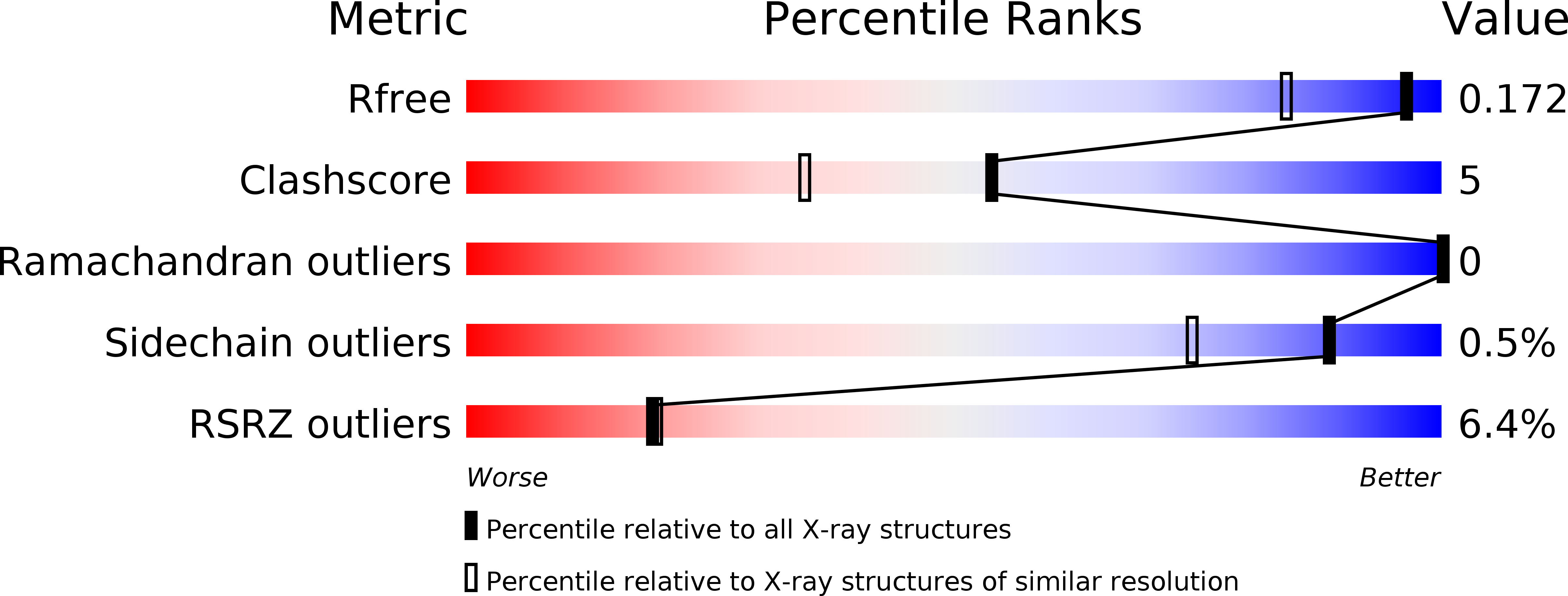Versatility in phospho-dependent molecular recognition of the XRCC1 and XRCC4 DNA-damage scaffolds by aprataxin-family FHA domains.
Cherry, A.L., Nott, T.J., Kelly, G., Rulten, S.L., Caldecott, K.W., Smerdon, S.J.(2015) DNA Repair (Amst) 35: 116-125
- PubMed: 26519825
- DOI: https://doi.org/10.1016/j.dnarep.2015.10.002
- Primary Citation of Related Structures:
5E50 - PubMed Abstract:
Aprataxin, aprataxin and PNKP-like factor (APLF) and polynucleotide kinase phosphatase (PNKP) are key DNA-repair proteins with diverse functions but which all contain a homologous forkhead-associated (FHA) domain. Their primary binding targets are casein kinase 2-phosphorylated forms of the XRCC1 and XRCC4 scaffold molecules which respectively coordinate single-stranded and double-stranded DNA break repair pathways. Here, we present the high-resolution X-ray structure of a complex of phosphorylated XRCC4 with APLF, the most divergent of the three FHA domain family members. This, combined with NMR and biochemical analysis of aprataxin and APLF binding to singly and multiply-phosphorylated forms of XRCC1 and XRCC4, and comparison with PNKP reveals a pattern of distinct but overlapping binding specificities that are differentially modulated by multi-site phosphorylation. Together, our data illuminate important differences between activities of the three phospho-binding domains, in spite of a close evolutionary relationship between them.
Organizational Affiliation:
Francis Crick Institute, Mill Hill Laboratory, The Ridgeway, Mill Hill, London NW7 1AA, UK.


















